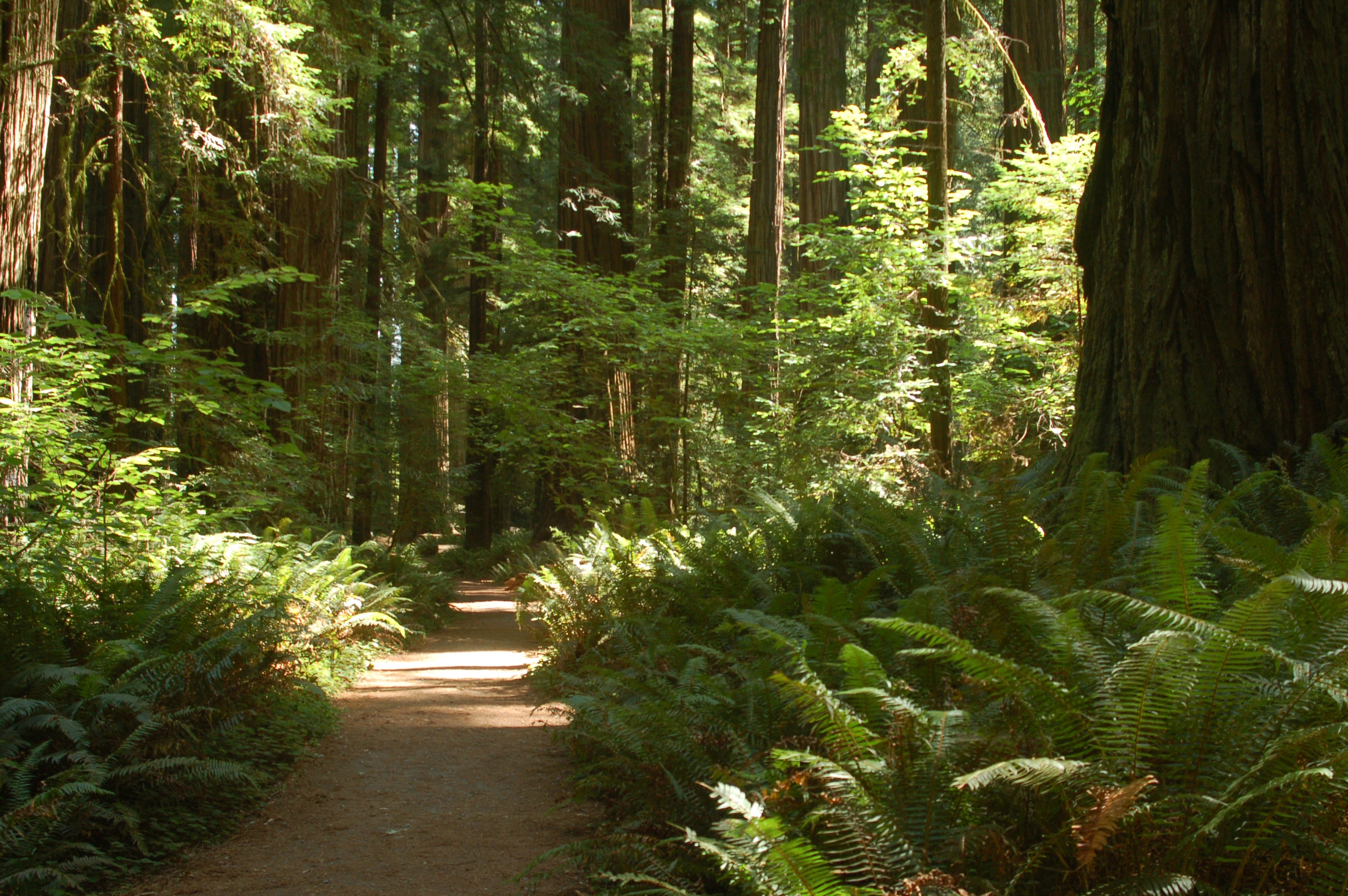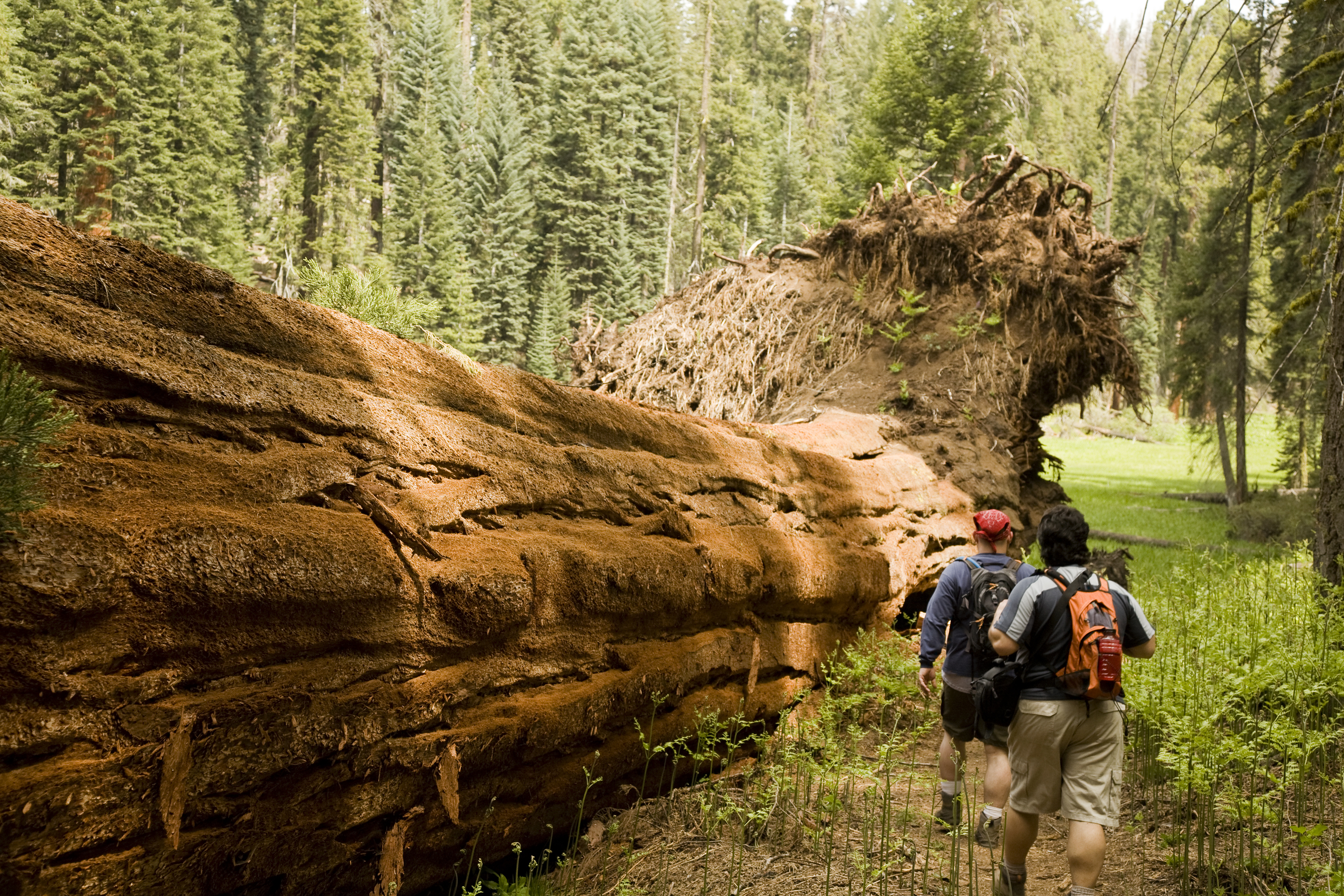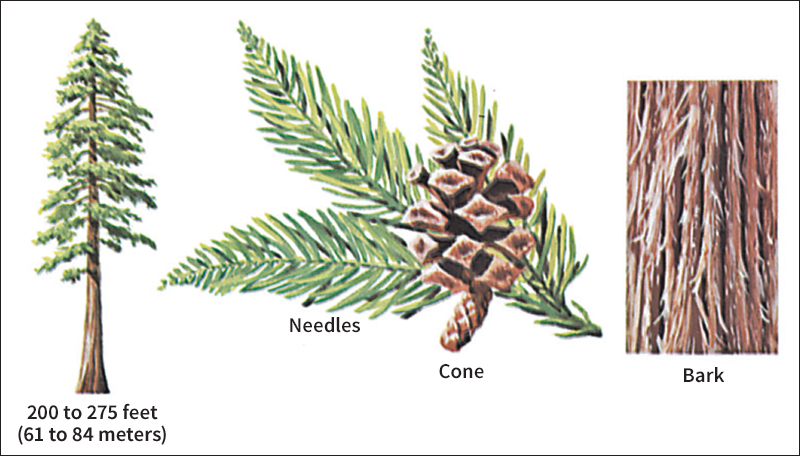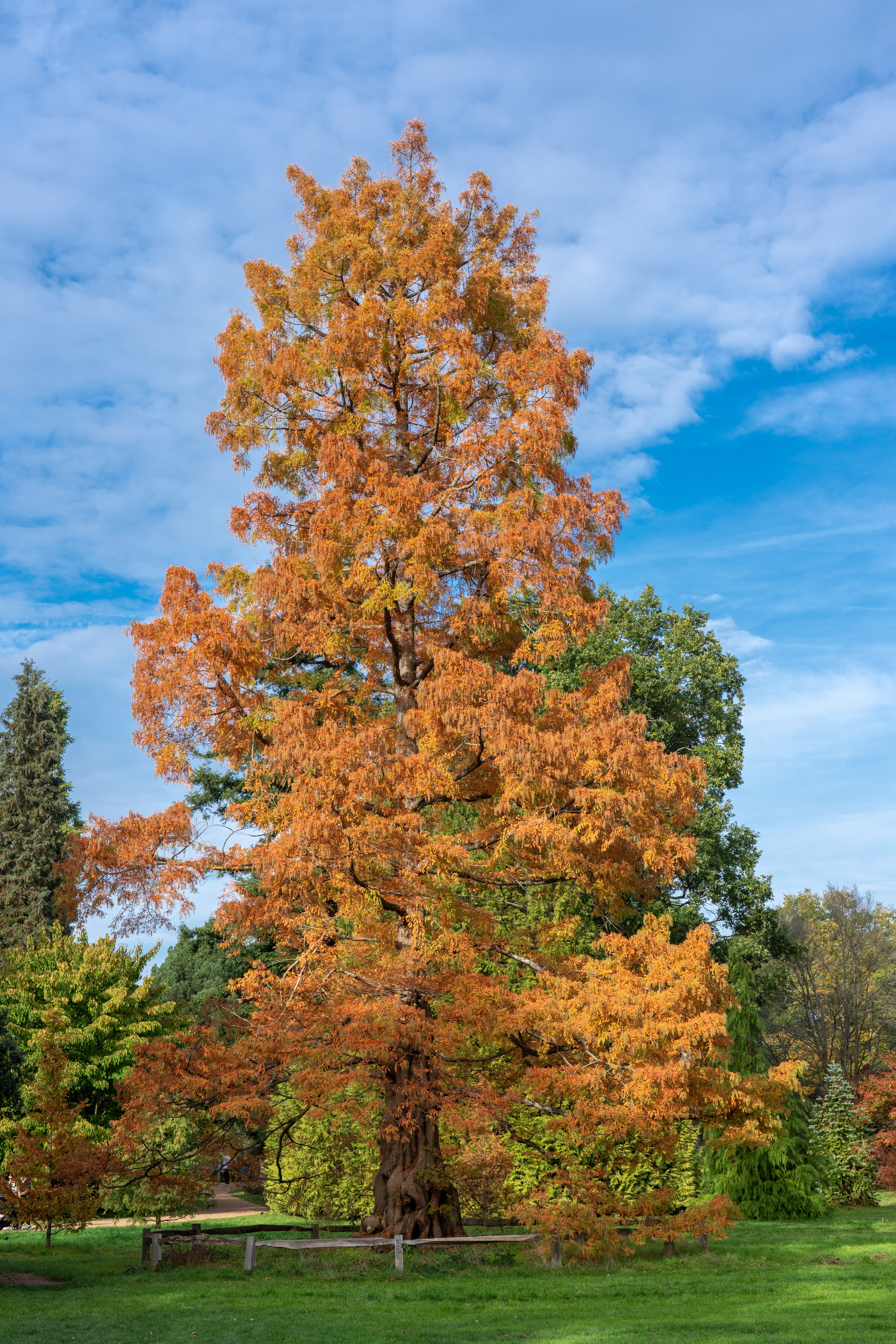Redwood is a common name for several magnificent forest trees. One well-known type, the coast redwood or California redwood, grows along the west coast of the United States from central California to southern Oregon. It thrives in a narrow, mountainous region facing the Pacific Ocean, rarely more than 50 miles (80 kilometers) inland. Another redwood, the dawn redwood, comes from China. A third species, called the sequoia, big tree, or Sierra redwood, grows in central California. For a discussion of this last species, see Sequoia.

The coast redwood
is the world’s tallest living tree. Adult trees from mature forests typically grow 200 to 300 feet (61 to 90 meters) high, with trunks 8 to 12 feet (2.4 to 3.7 meters) wide. The tallest known redwood, in northern California, stands over 377 feet (115 meters) high. The coast redwood is the state tree of California.

In a typical redwood forest, the massive trees grow close together, shutting out sunlight. Thick summer fog often blankets the forest, and the trees obtain water from this fog. Redwood forests have little underbrush because few plants can survive in the cool, dim conditions beneath the trees. Tight circles of young redwoods, called fairy rings, grow from the roots of many old stumps, completely enclosing them. The lowest branches of mature trees may hang 80 to 100 feet (24 to 30 meters) above the ground. However, the lowest branches of young redwoods grow all the way to ground level.

The coast redwood has a range of needle sizes and shapes. Spiky needles from the lower branches grow about 1 inch (2.5 centimeters) long. Smaller, scalelike needles appear on the upper branches. All needles remain on the tree for several years. The tree’s oval-shaped cones measure about 1 inch in length. Tightly packed under each scale of a cone are tiny reddish-brown seeds, each about 1/16 inch (1.6 millimeters) long.
A coast redwood has reddish, deeply grooved bark that measures from 6 to 18 inches (15 to 45 centimeters) thick. This thick bark protects the tree from damage caused by fire. The tree’s wood is soft, light red, and weak. However, it is also remarkably resistant to decay, disease, and insects. A coast redwood can live more than 2,000 years.
The dawn redwood
is a close relative of the coast redwood. Scientists once believed that dawn redwoods were extinct, knowing them only from fossils. But in 1941, a Chinese forester, Tsou Kan, discovered a large tree growing in a hidden valley of central China. In 1946, two Chinese botanists, Hsen-Hsu Hu and Wan-Chun Cheng, identified this tree as the dawn redwood. Living dawn redwoods have since been found in China’s Sichuan and Hubei provinces. Fossils show that the tree once grew in North America as far south as California, as well as in Greenland, Siberia, and Japan.
Unlike coast redwoods, which are evergreens, dawn redwoods are deciduous trees. They shed their needles each fall and grow new ones again in the spring. These needles resemble those of coast redwoods, but they are slightly narrower and not as stiff. Dawn redwoods typically stand about 100 feet (30 meters) tall.
Like coast redwoods, dawn redwoods grow readily from seeds. Scientists brought seedling trees from China and planted them in the eastern United States and the Pacific Northwest. Today, dawn redwoods thrive in parks and gardens around the world.

Redwood conservation.
Most coast redwood forests receive protection in state and national parks and from conservation organizations. Redwood parks rank among the most visited forests in the United States. The long-term conservation of all redwoods will depend upon incorporating scientific research about the trees with conservation and management plans and policies.
See also Conifer; Redwood National Park; Sequoia.
